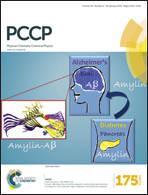Diverse interface effects on ferroelectricity and magnetoelectric coupling in asymmetric multiferroic tunnel junctions: the role of the interfacial bonding structure
Abstract
Interface and size effects on electric/magnetic orders and magnetoelectric coupling are vital in the modern application of quantum-size functional devices based on multiferroic tunnel junctions. In order to give a comprehensive study of the interface and size effects, the properties of a typical asymmetric multiferroic tunnel junction, i.e., Fe/BaTiO3/Co, have been calculated using the first-principles simulations. Most importantly, all of the eight possible structures with four combinations of electrode/ferroelectric interfaces (i.e., Fe/BaO, Fe/TiO2, Co/BaO and Co/TiO2) and a series of barrier thicknesses have been taken into account. In this work, the equilibrium configurations, polarization, charge density, spin density and magnetic moments, etc., have been completely simulated and comprehensively analyzed. It is found that the ferroelectric stability is determined as a competition outcome of the strength of short-range chemical bondings and long-range depolarization/built-in fields. M/BaO (M = magnetic metal) terminations show an extraordinary enhancement of local polarization near the interface and increase the critical thickness of ferroelectricity. The bistability of polarization is well kept at the M/TiO2 interface. At the same time, the induced magnetic moment on atoms at the interfaces is rather localized and dominated by the local interfacial configuration. Reversing electric polarization can switch the induced magnetic moments, wherein atoms in M–O–Ti and M–Ti–O chains show preference for being magnetized. In addition, the difference between the sum of the interfacial magnetic moments is also enlarged with the increase of the barrier thickness. Our study provides a comprehensive and detailed reference to the manipulation and utilization of the interface, size and magnetoelectric effects in asymmetric multiferroic tunnel junctions.


 Please wait while we load your content...
Please wait while we load your content...